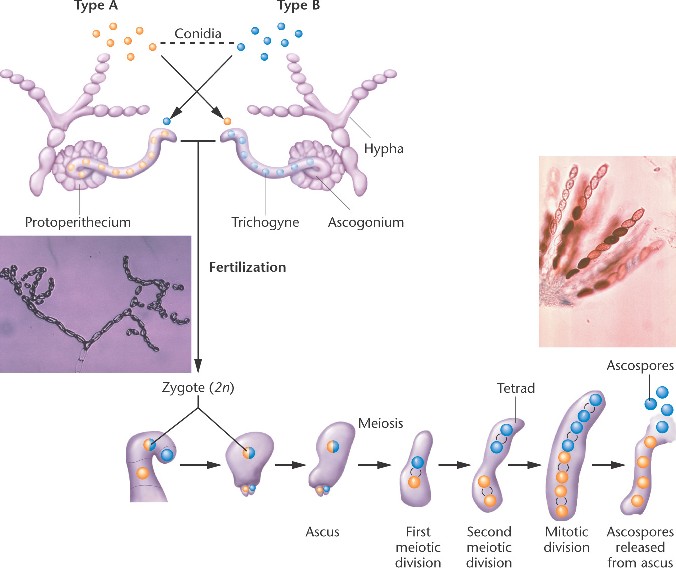 The bread mold Neurospora spends most of it life cycle in a multicellular
haploid stage.
The bread mold Neurospora spends most of it life cycle in a multicellular
haploid stage.
Following fertilization of conidia of opposite mating types, the zygote undergoes meiosis in an ascus, which retains the haploid tetrad (do not confuse with tetrad formed in prophase I).
Each cell in the tetrad undergoes mitosis to produce 8 haploid ascospores.
Because the 8 cells reflect the sequence of their formation following meiosis, the tetrad is "ordered" and can be subjected to ordered tetrad analysis.